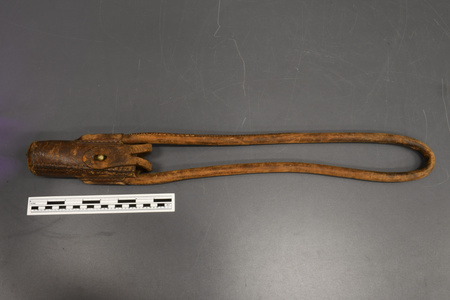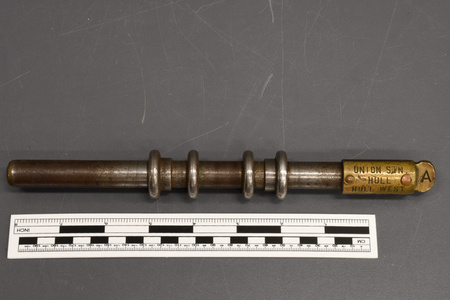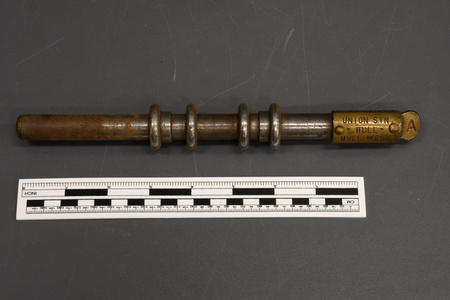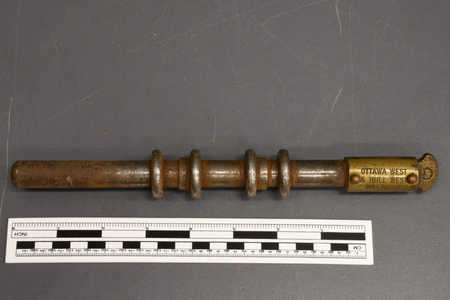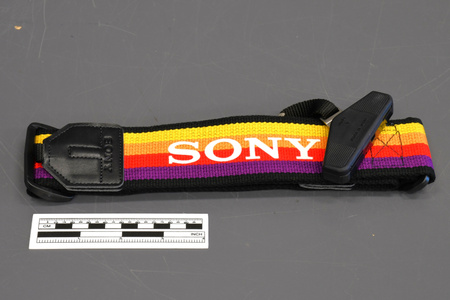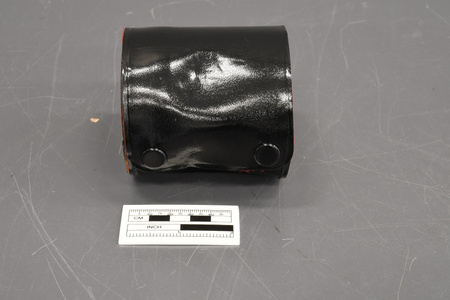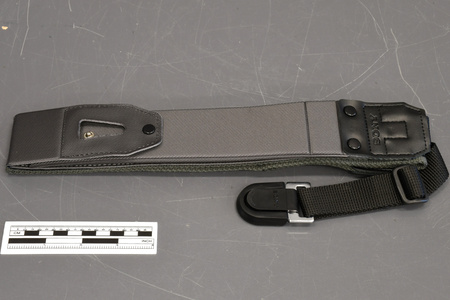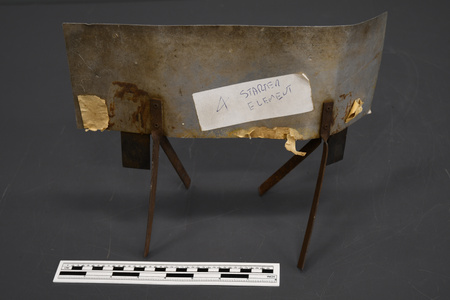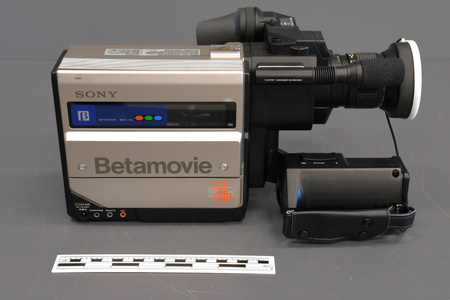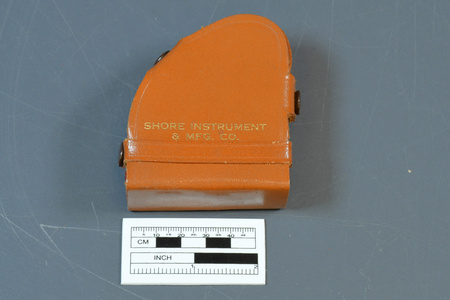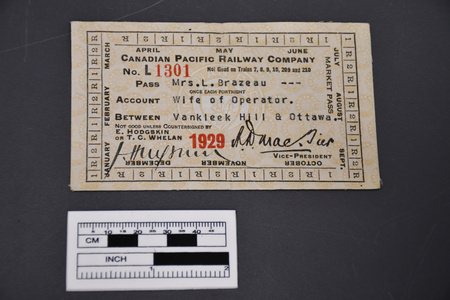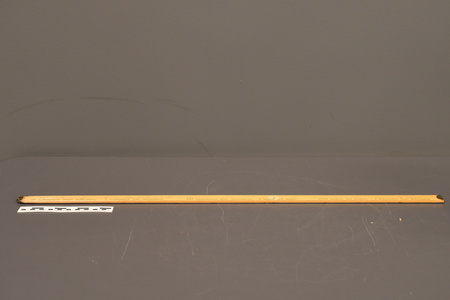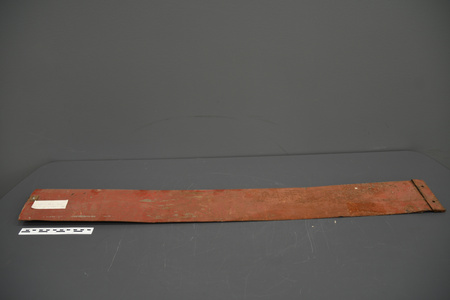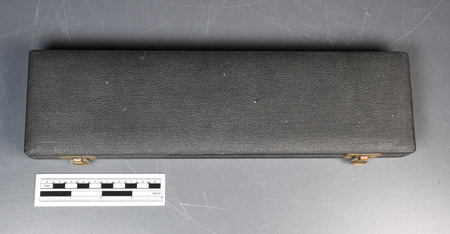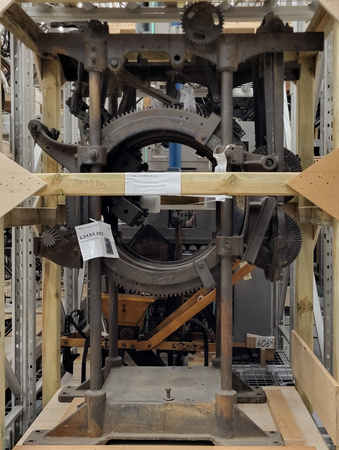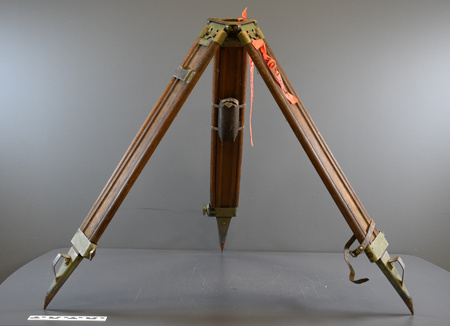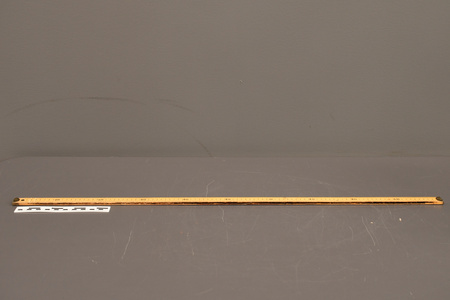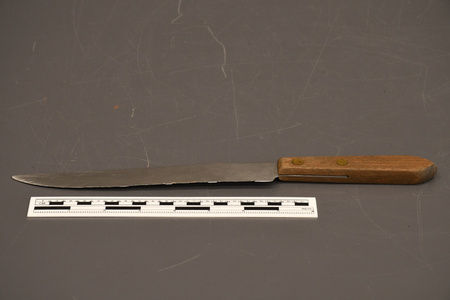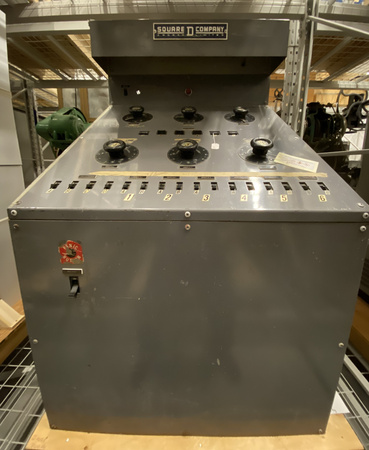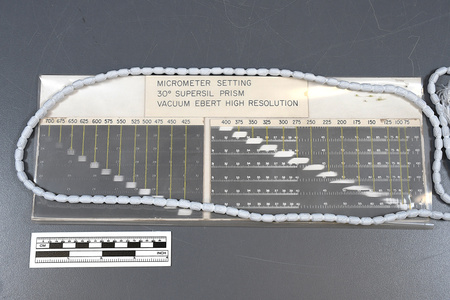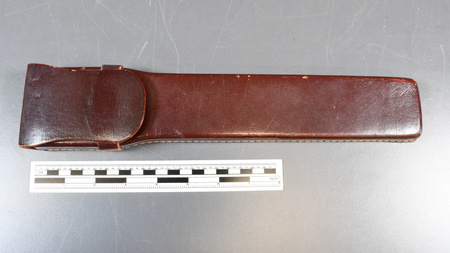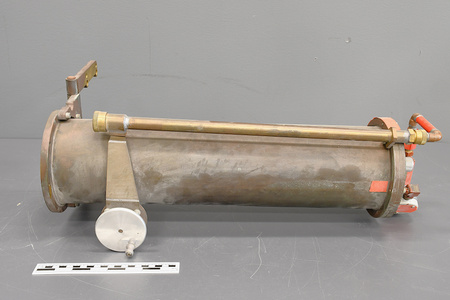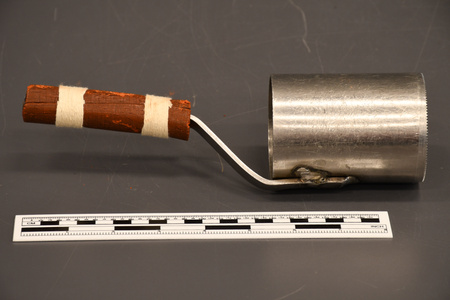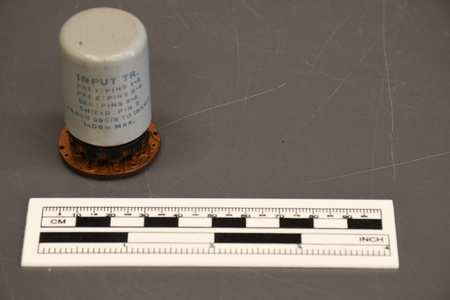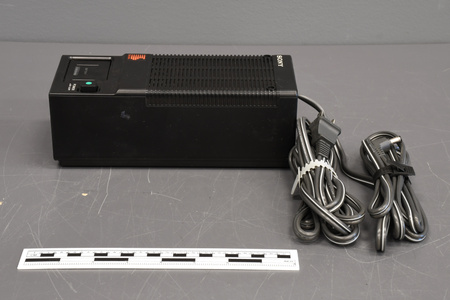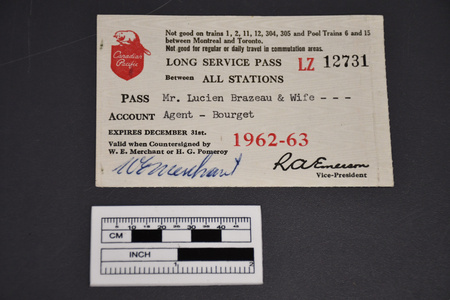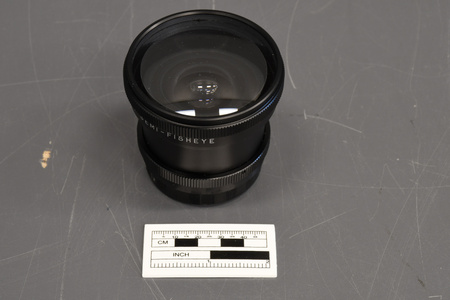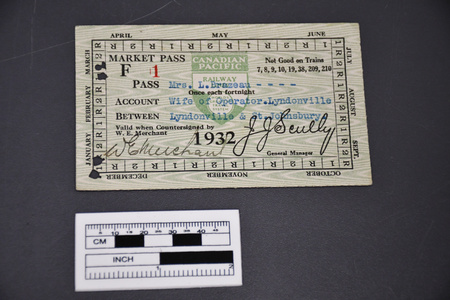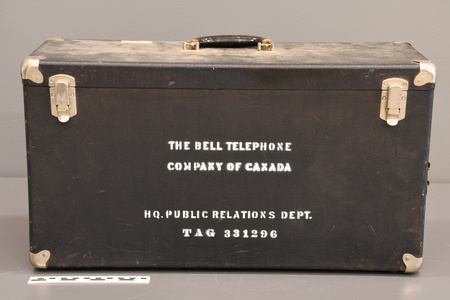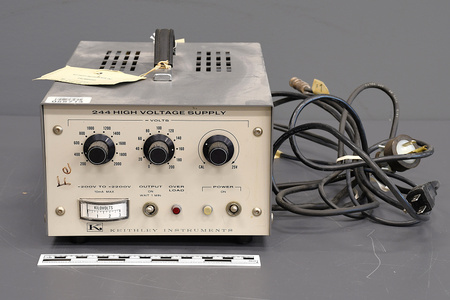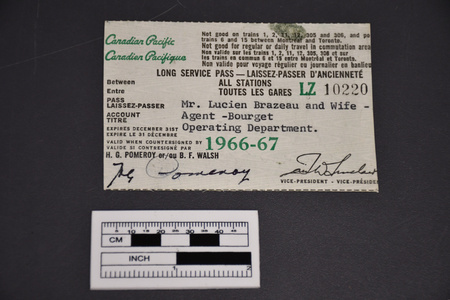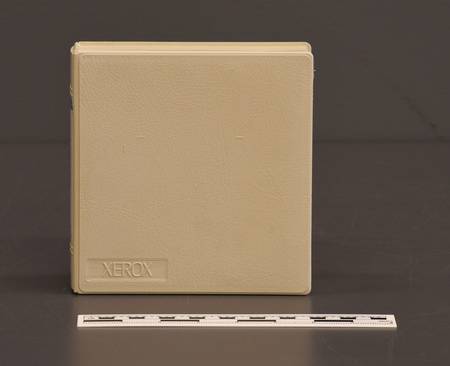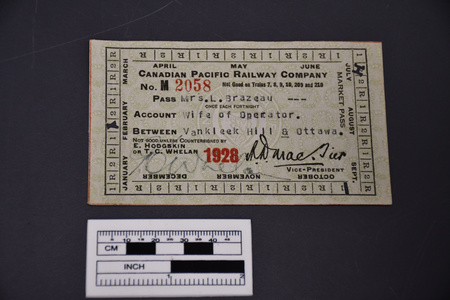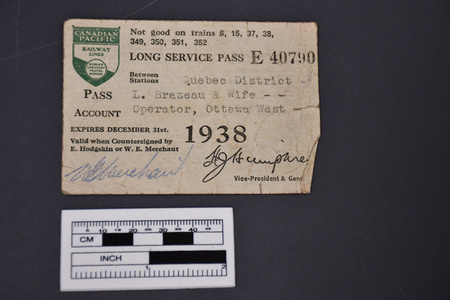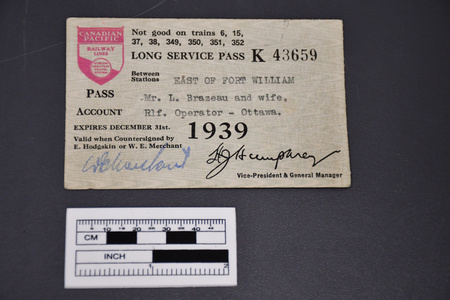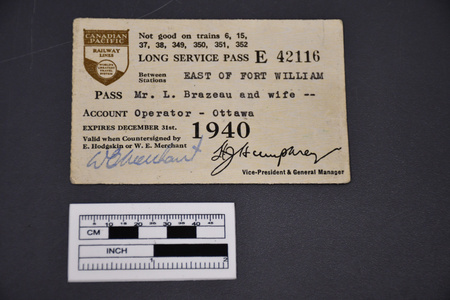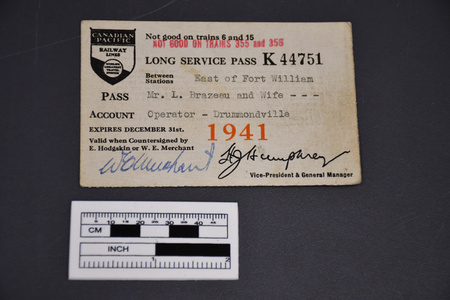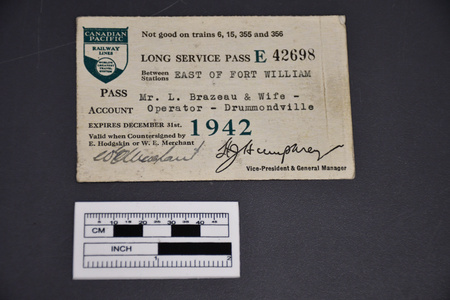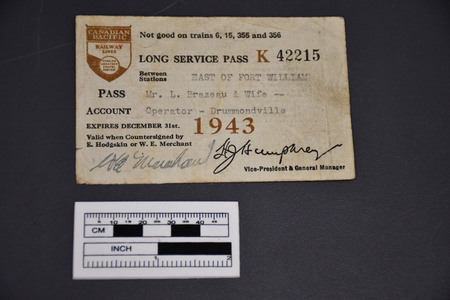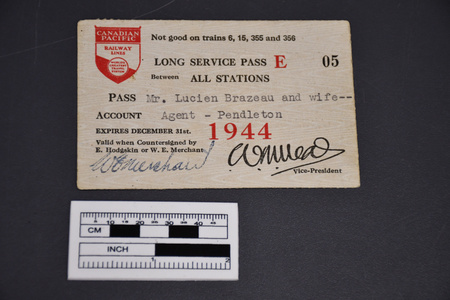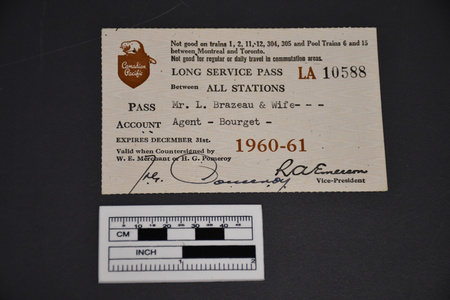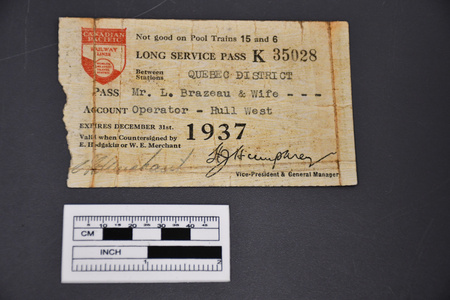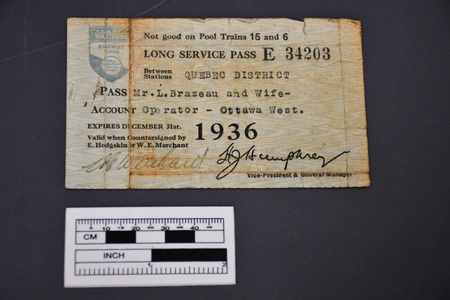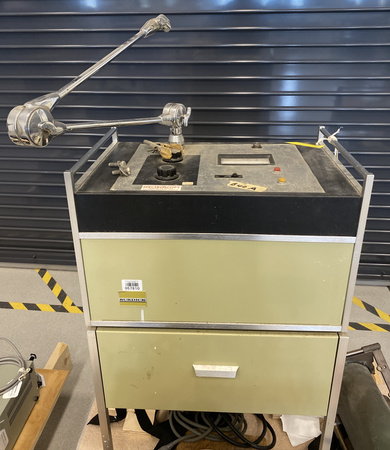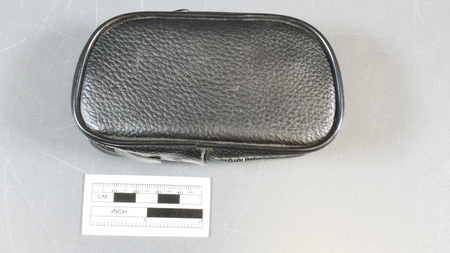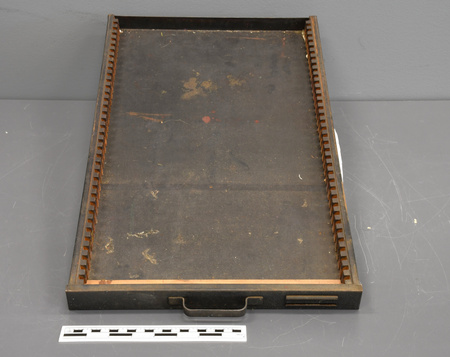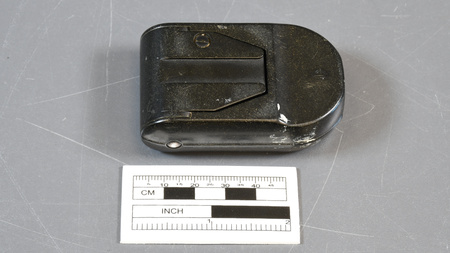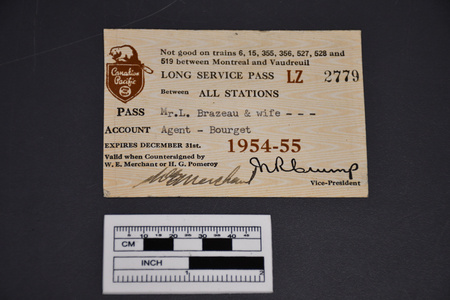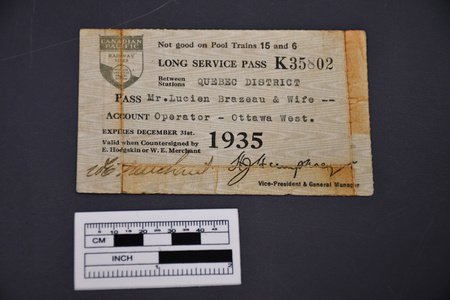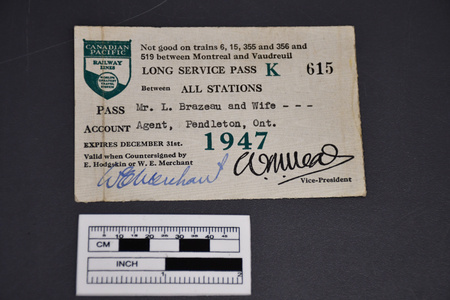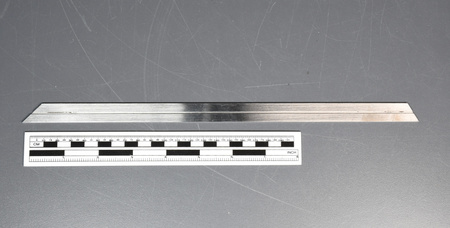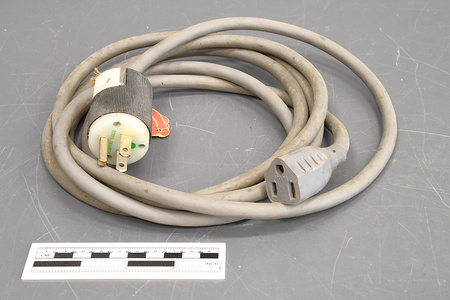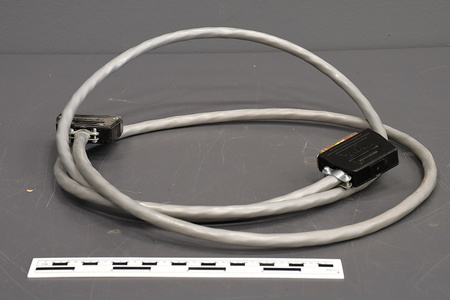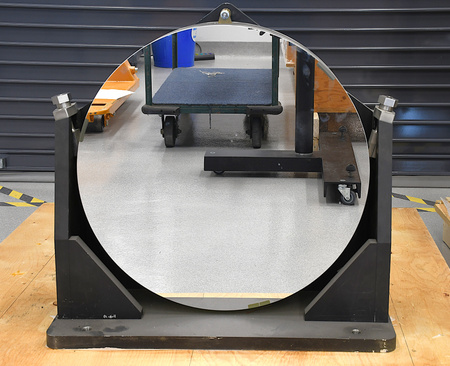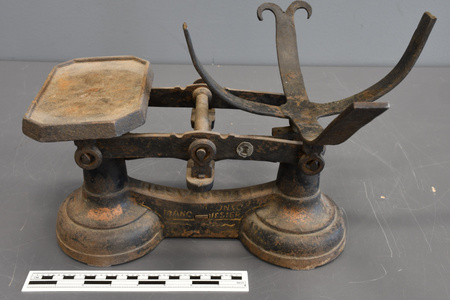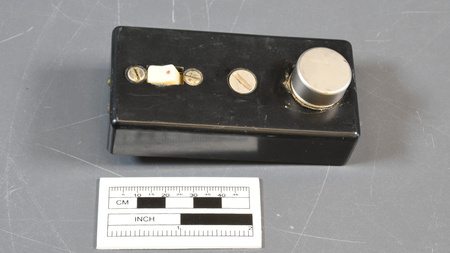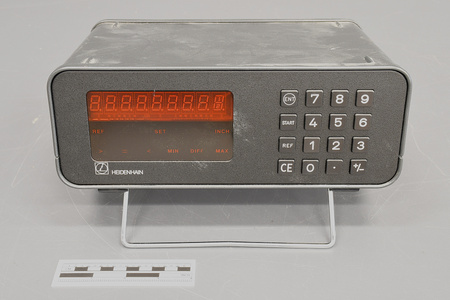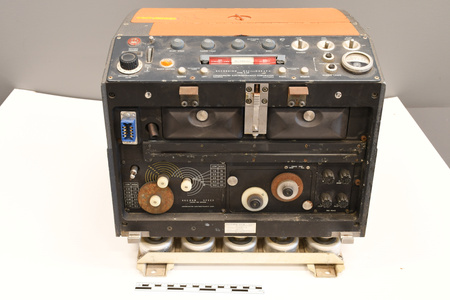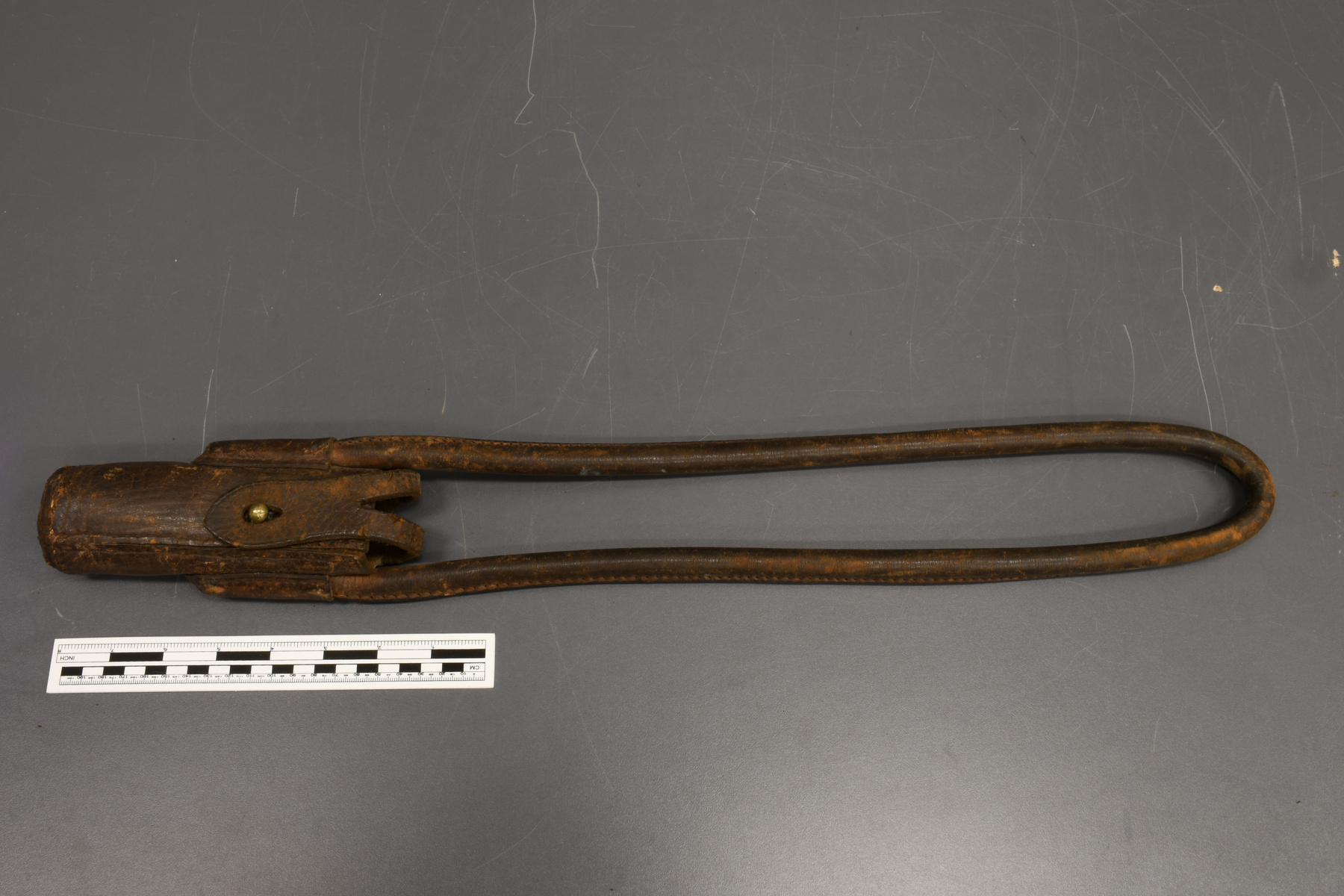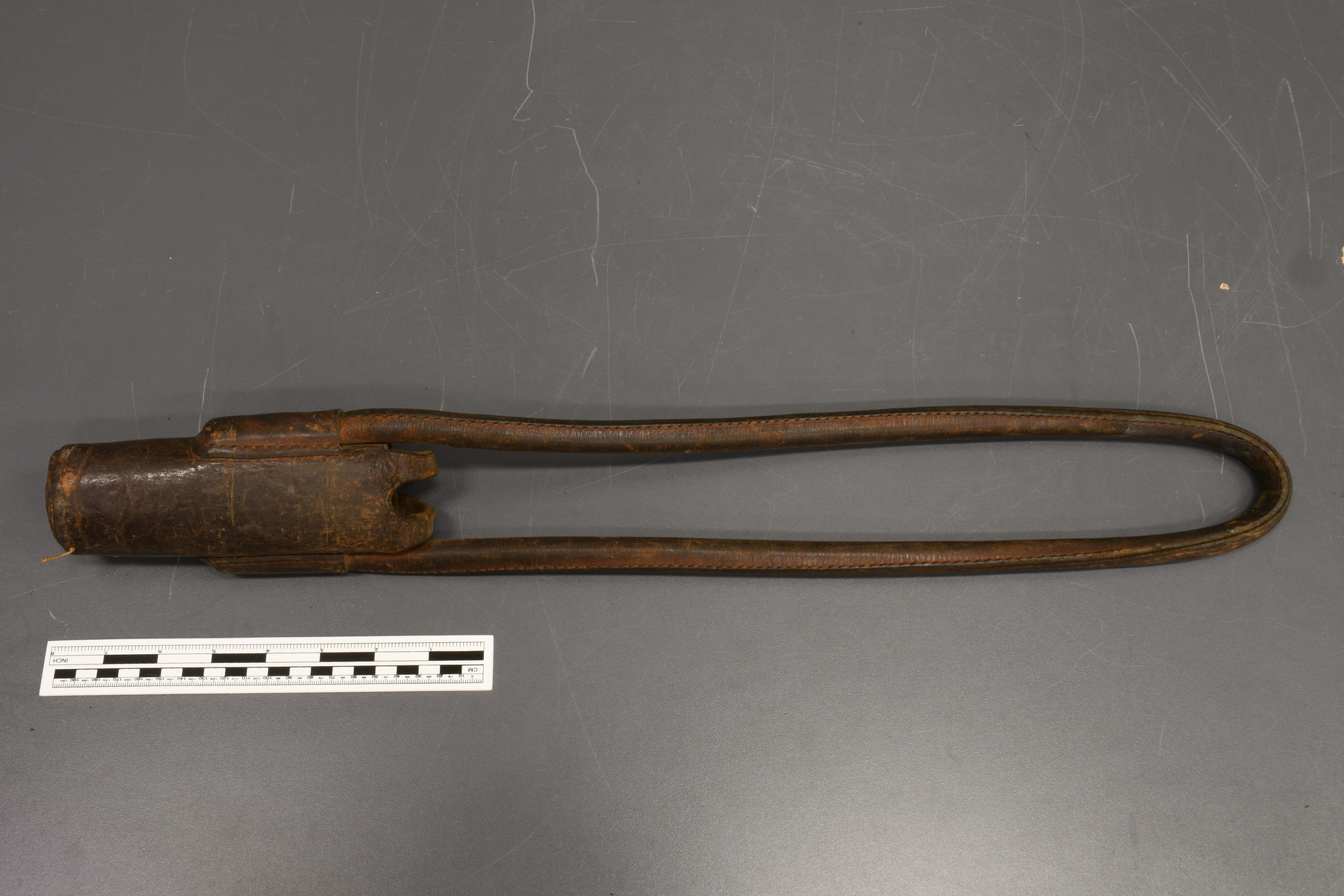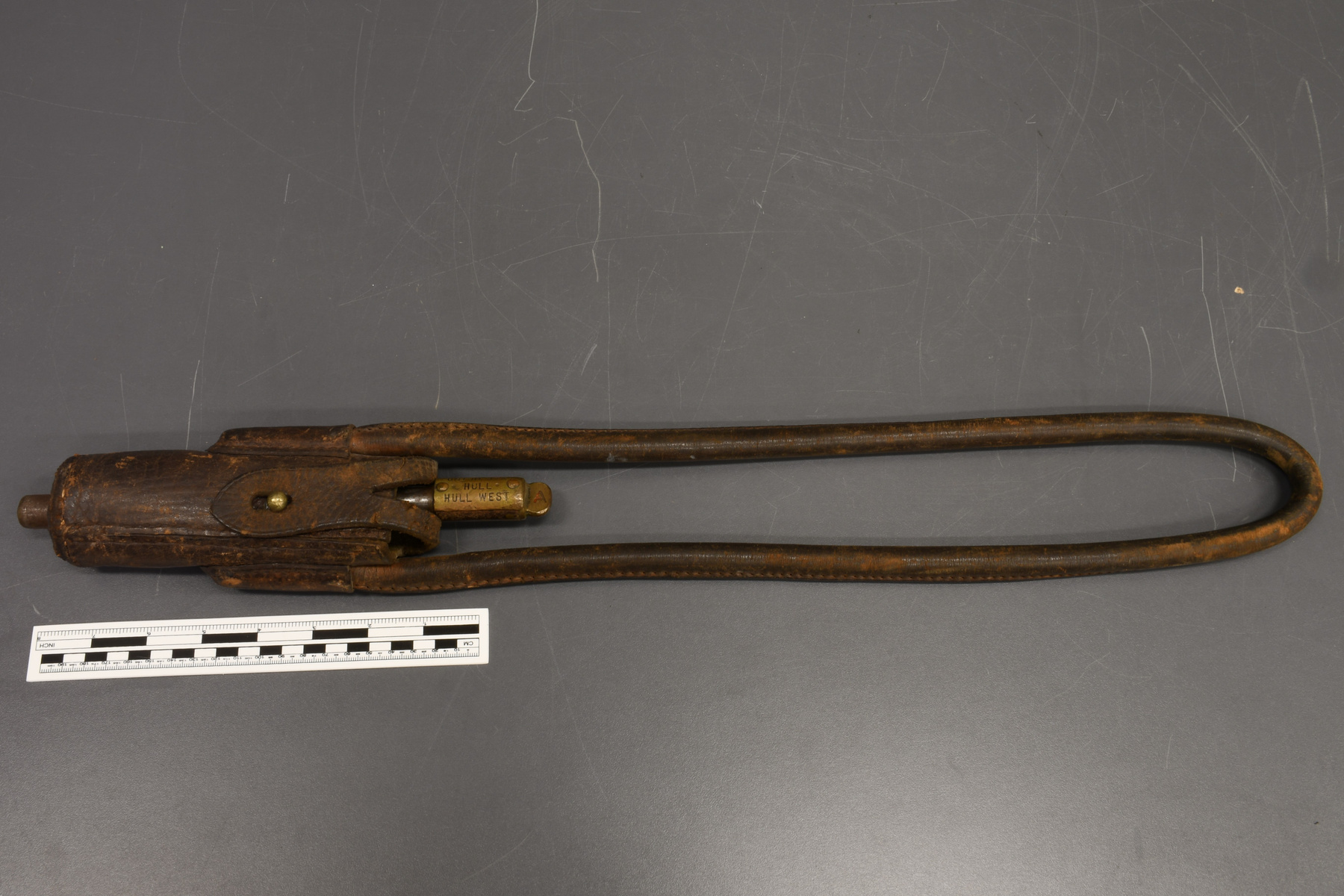Case
Use this image
Can I reuse this image without permission? Yes
Object images on the Ingenium Collection’s portal have the following Creative Commons license:
Copyright Ingenium / CC BY-NC-ND (Attribution-NonCommercial 4.0 International (CC BY-NC 4.0)
ATTRIBUTE THIS IMAGE
Ingenium,
2002.1544.001
Permalink:
Ingenium is releasing this image under the Creative Commons licensing framework, and encourages downloading and reuse for non-commercial purposes. Please acknowledge Ingenium and cite the artifact number.
DOWNLOAD IMAGEPURCHASE THIS IMAGE
This image is free for non-commercial use.
For commercial use, please consult our Reproduction Fees and contact us to purchase the image.
- OBJECT TYPE
- N/A
- DATE
- Unknown
- ARTIFACT NUMBER
- 2002.1544.001
- MANUFACTURER
- Unknown
- MODEL
- Unknown
- LOCATION
- Unknown
More Information
General Information
- Serial #
- N/A
- Part Number
- 1
- Total Parts
- 2
- AKA
- N/A
- Patents
- N/A
- General Description
- An object comprised of leather and metal elements that are possibly brass/Un objet fait avec des éléments en cuir et du métal qui est possiblement du laiton.
Dimensions
Note: These reflect the general size for storage and are not necessarily representative of the object's true dimensions.
- Length
- 57.0 cm
- Width
- 8.0 cm
- Height
- 5.0 cm
- Thickness
- N/A
- Weight
- N/A
- Diameter
- N/A
- Volume
- N/A
Lexicon
- Group
- Railway Transportation
- Category
- Operations
- Sub-Category
- N/A
Manufacturer
- AKA
- Unknown
- Country
- Unknown
- State/Province
- Unknown
- City
- Unknown
Context
- Country
- Canada
- State/Province
- Unknown
- Period
- Ca. 1965
- Canada
-
This railway signaling system was used for dangerous stretches of single track such as rough tunnels and gauntlets as well as single tracks that connected to double tacks and bridges. Artifacts such as this were used by the donor’s father when he worked for the Canadian Pacific Railway company for the the Ottawa, Hull, and Hull-Ouest stations between 1924 and 1973. Ce système de signal ferroviaire étais déployé pour des sections de chemin de fer qui était plutôt dangereux comme des tunnels et des voies de chevauchement ainsi que des voies simples qui se connectaient à soit des ponts ou des voies doubles. L'artefact était utilisé par le père du donateur quand y travaillais pour le chemin de fer Canadienne Pacifique pour les stations d'Ottawa, Hull et Hull-Ouest entre 1924 et 1973. - Function
-
Used to hold the access token that controlled railway traffic on single tracks to avoid either head-on or rear-end collisions. Utiliser pour tenir le jeton d'accès pour la gestion et le contrôle de la circulation ferroviaire pour éviter les collisions. - Technical
-
The staff is used on railways that make use of a single-track system as an electrical access token. The staff is given to an engineer by the stationmaster to mark the boundary for the section of track the staff is supposed to cover. The staff is inserted and removed from an instrument that is placed at intermediate sections along the track. Each instrument could hold up to 35 staffs. Only one staff could be removed at a time to give the locomotive that held the staff priority. These staffs were electrically connected and synchronized with the help of the instrument they sat in. When removed, the staff would manually block the rail from being used by other locomotives until the staff was inserted into a new checkpoint. Ce bâton était utilisé sur des chemins de fer qui déployait des voies simples. Le bâton était effectivement un jeton d'accès. Un bâton est fourni à un ingénieur par un chef de gare pour dénoter la section du chemin de fer qu'il représentait. Quand le bâton était enlevé de l'instrument la personne qui le possédais avait priorité sur le chemin de fer et la voie ferrée était bloquée pour s'assurer que d'autres locomotives ne pouvaient pas utiliser le chemin. Seulement un bâton pouvait être utilisé à la fois, mais chaque instrument pouvait retenir jusqu'à 35 bâtons. Les mouvements du bâton était synchronisé électriquement avec l'instrument pour synchroniser le tout et s'assurer de ne pas avoir de collisions sur le chemin de fer. - Area Notes
-
Unknown
Details
- Markings
- None apparent/L'objet n'a pas de marque.
- Missing
- None apparent/L'objet a toutes ces pièces.
- Finish
- A dark brown leather object that has a large curved handle. The handle connects to a pouch made of the same material. The pouch has a flap that can open and close with the help of a metal button that is possibly made of brass. The base of the object has a circular hole that has four metal rivets around its circumference. Un objet fait en cuir de couleur brun foncé qui a une manche longue et courbé. La manche rejoint une pochette fait avec le même matériel. La pochette possède un volet qui peut ouvrir ou fermer avec l'aide d'un bouton en métal qui est possiblement fait en laiton. La base de l'objet a un trou circulaire avec quatre rivets en métal sur sa circonférence.
- Decoration
- N/A
CITE THIS OBJECT
If you choose to share our information about this collection object, please cite:
Unknown Manufacturer, Case, Unknown Date, Artifact no. 2002.1544, Ingenium – Canada’s Museums of Science and Innovation, http://collection.ingenium.ca/en/item/2002.1544.001/
FEEDBACK
Submit a question or comment about this artifact.
More Like This

